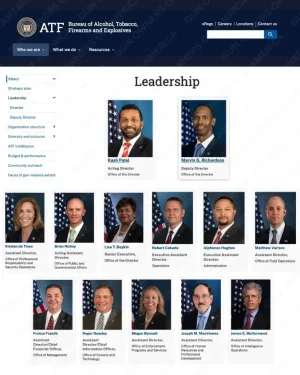- Joined
- Jul 5, 2024
- Messages
- 1,306
- Likes
- 8,270
Usual NGO route!Who received that $18M on the Indian side? Can we rip that person/organization a new one? I hope babaji mahamaanav yugpurush leaderji will authorize it.
A preliminary investigation has already started, and was also confirmed by our MEA spox.Who received that $18M on the Indian side? Can we rip that person/organization a new one? I hope babaji mahamaanav yugpurush leaderji will authorize it.
This guy is one smart cookie. Back in the day when he announced his candidature for the President of the US & was seeking the nomination of the Republican Party , the points he raised were remarkably similar to the ones Trump later raised & won on .Think it's a smart move from Vivek. He wants to stay clean from all the muck slinging that is bound to happen with doge. Being a governor will add to his credentials/experience as a political administrator which probably doge could not do.


not that significant of news per se but still,
along with the FBI, Kashyap 'Kash' Patel has also become acting director of the notorious BATFE - Bureau of Alcohol, Tobacco, Firearms and Explosive
View attachment 26082
a republican heading BATFE or commonly called ATF, means more lenient gun laws overall, but since we're talking about FBI chief also serving as acting director of BATFE, you can guess some crackdown on illegal gun owners there is also expected
not that significant of news per se but still,
along with the FBI, Kashyap 'Kash' Patel has also become acting director of the notorious BATFE - Bureau of Alcohol, Tobacco, Firearms and Explosive
View attachment 26082
a republican heading BATFE or commonly called ATF, means more lenient gun laws overall, but since we're talking about FBI chief also serving as acting director of BATFE, you can guess some crackdown on illegal gun owners there is also expected
i'm not aware of that, besides ATF despite having a staff of ~5500 some officers, agents and all, is often criticised for their handling of firearm matters that goes against 2nd Amendment things, some of their 'definitions' of what is legal or not is like ambiguous, famous case being arm brace thing that can easily be used as a makeshift buttstock on firearms and yet 'technically' it's an arm brace that one's supposed to wrap around his arm to compensate for 'lack of buttstock' on a firearmif i remember correctly ATF came down on honey badger pistol/rifle during previous trump presidency.
Lool, Canada might be getting kicked out of 5 eyes :
View: https://x.com/Dimi/status/1894408479286133040
Trump announces ‘major Economic Development transactions’ with Russia.
Putin is ready to provide rare earths to US.
View: https://x.com/presssec/status/1894072592140517669?s=46
View: https://x.com/spectatorindex/status/1894122702237307292?s=46
some years ago, there used to be discussions on why doesn't GoI doesn't do these kind of briefings.
well it turns out, if such a system is created it's easy for the left to capture and do their usual gate keeping like they do everywhere else.
======
They kicked out the White House correspondents association, a terrible group of mean girls and snobs who gate kept who could cover Trump.
View: https://x.com/Cernovich/status/1894458091875570146
